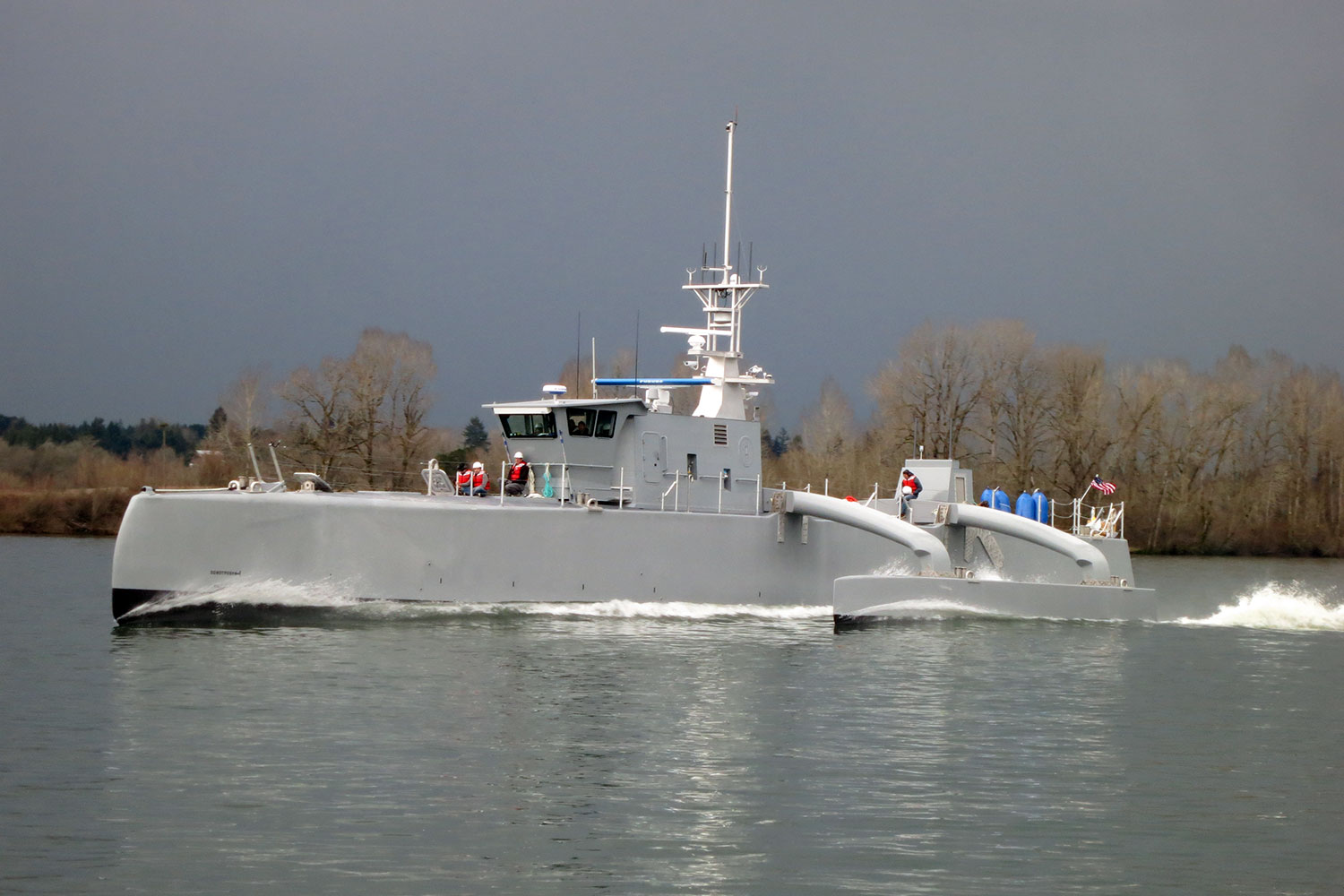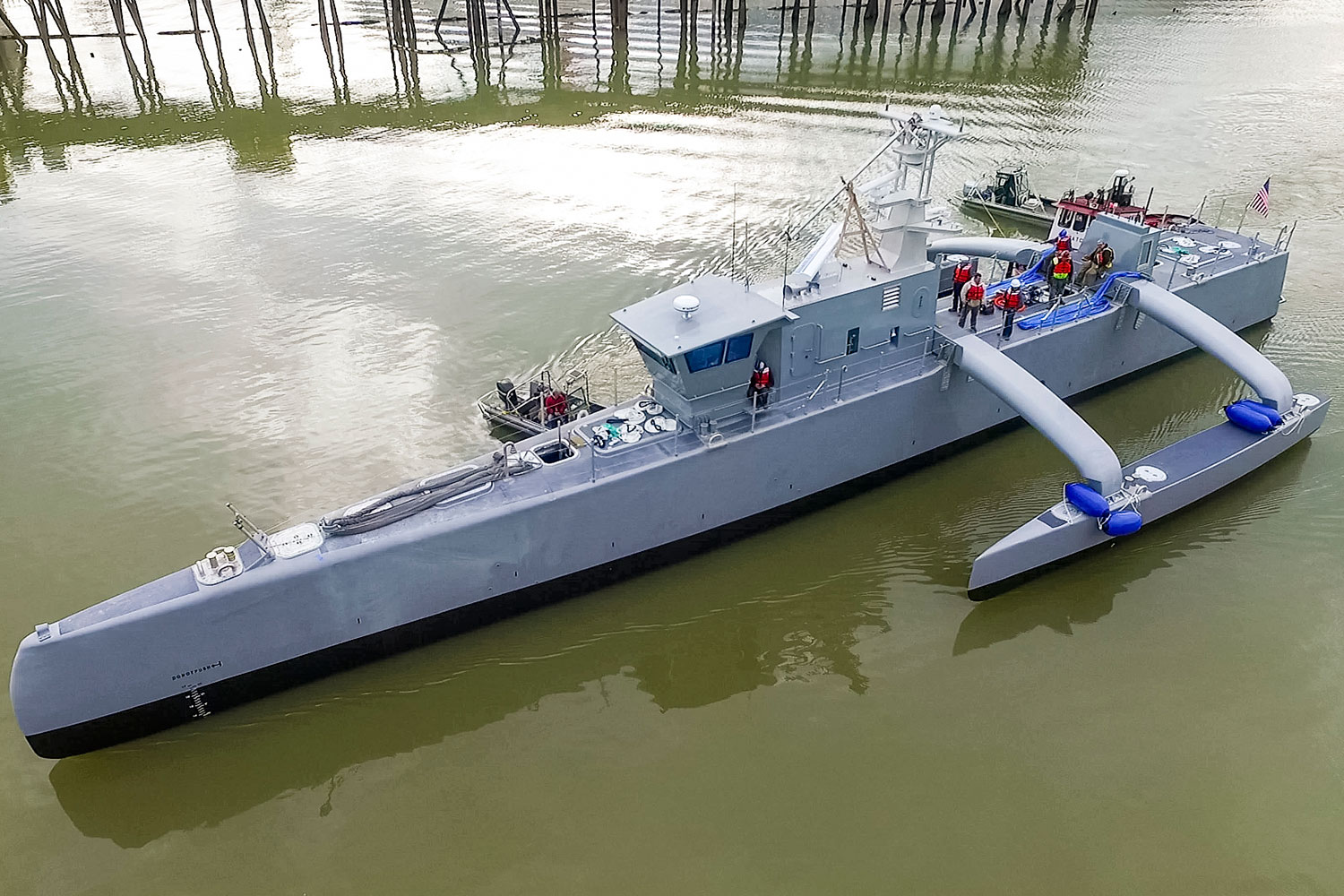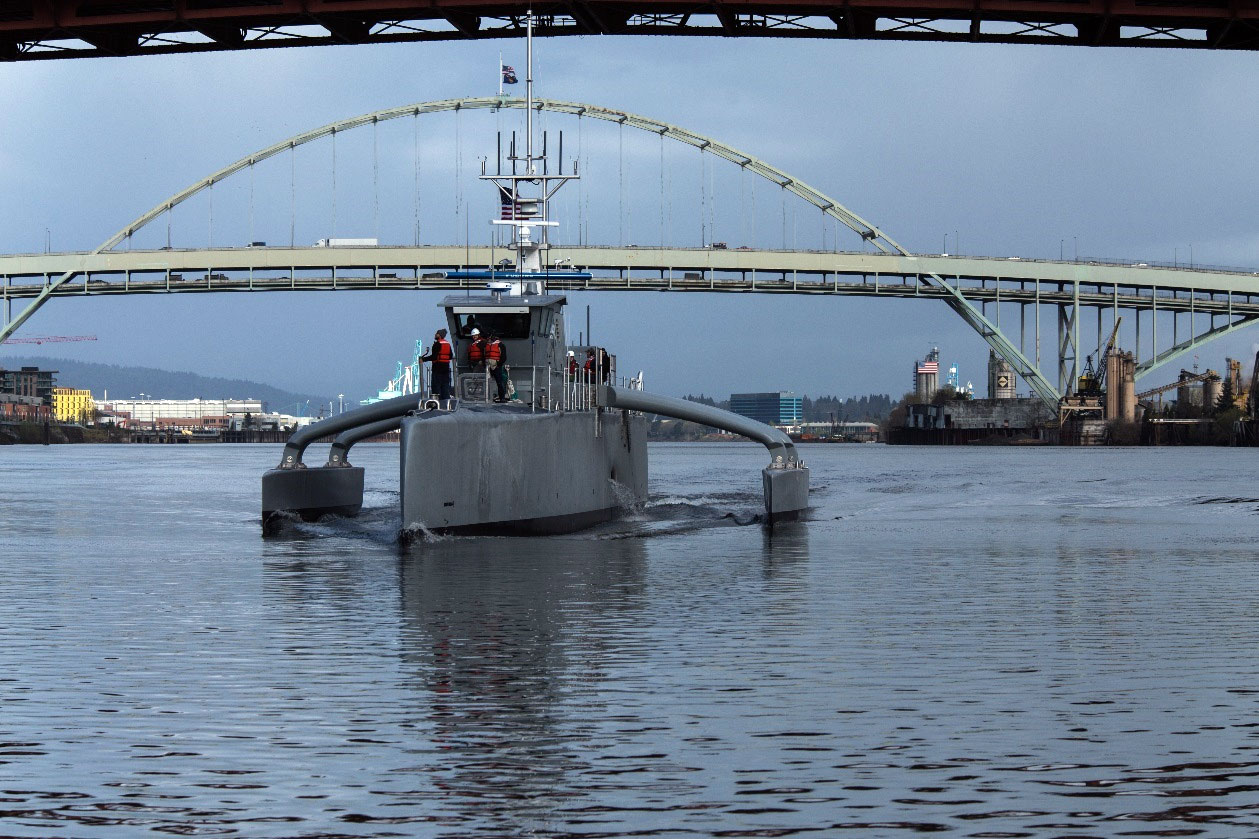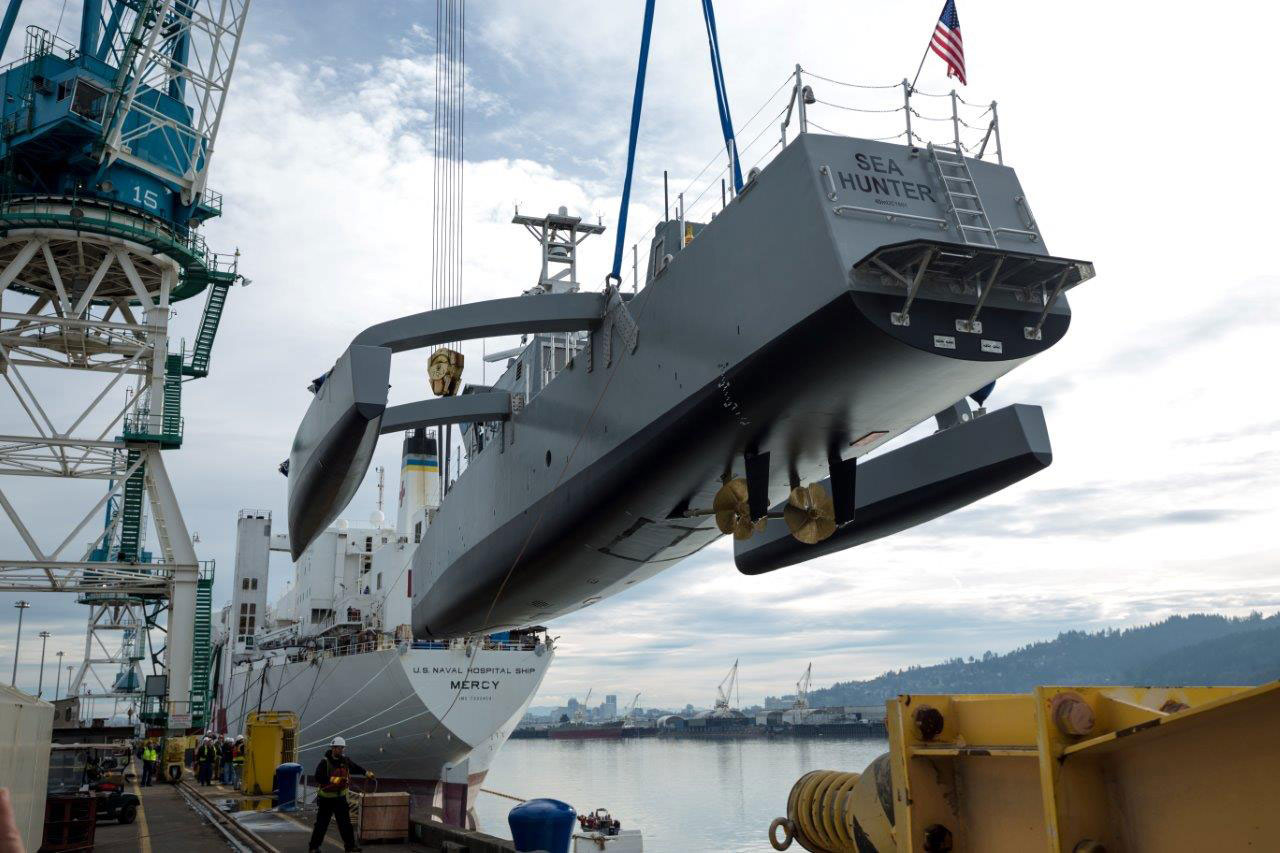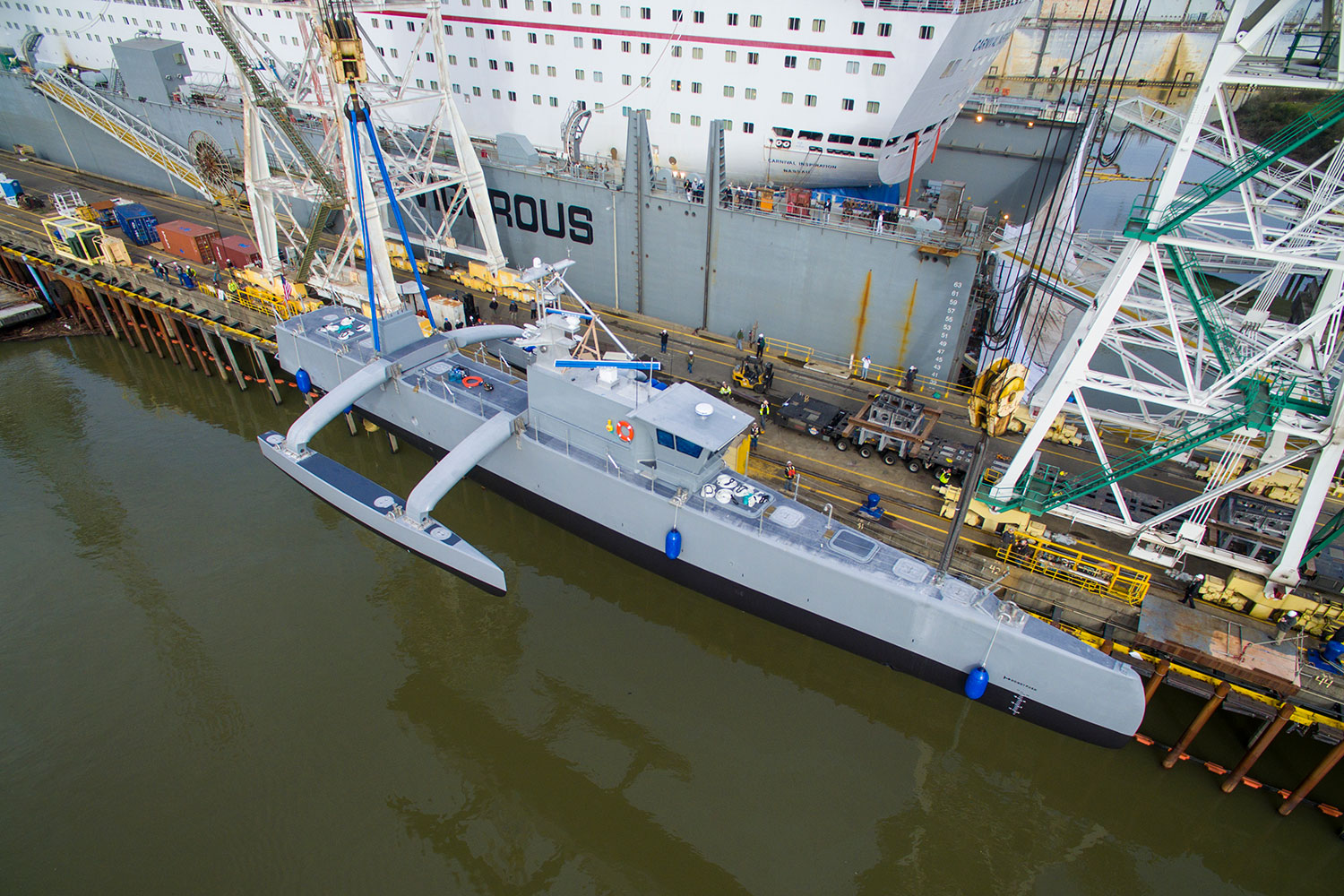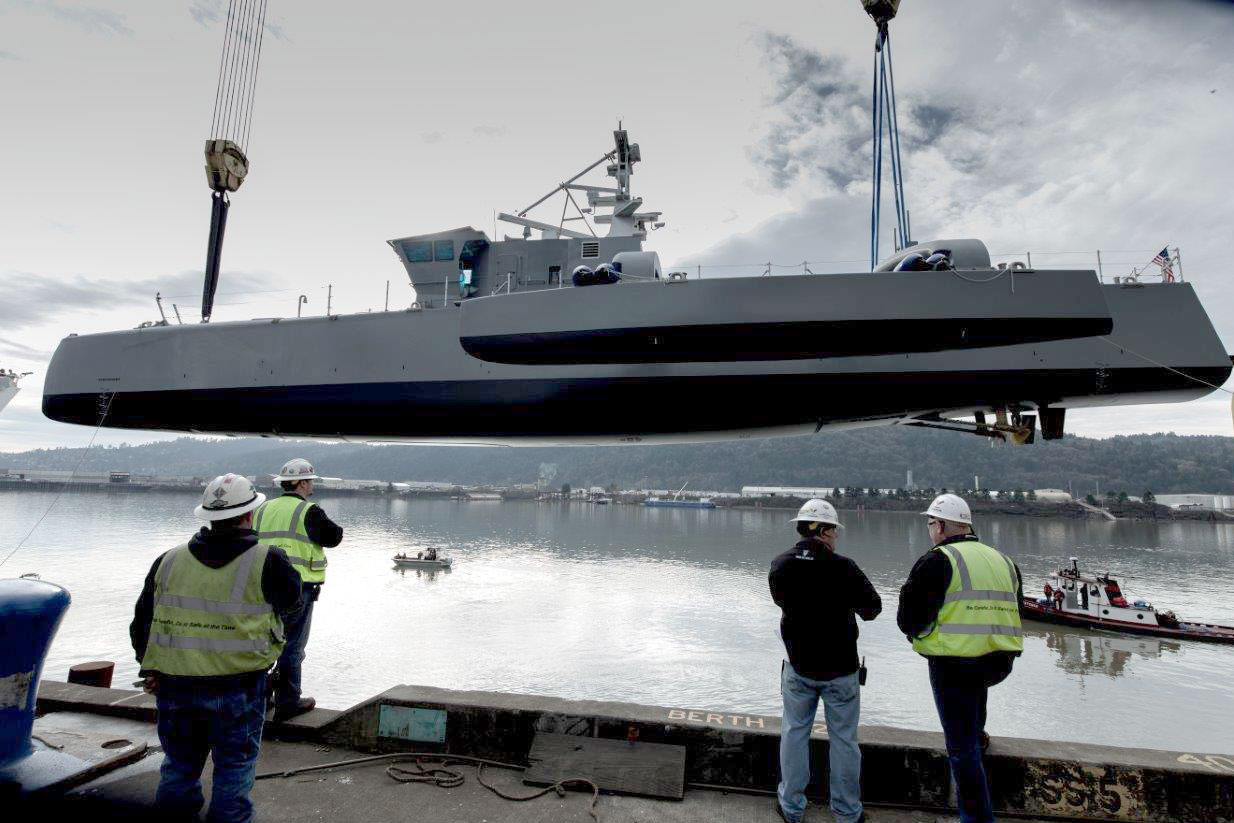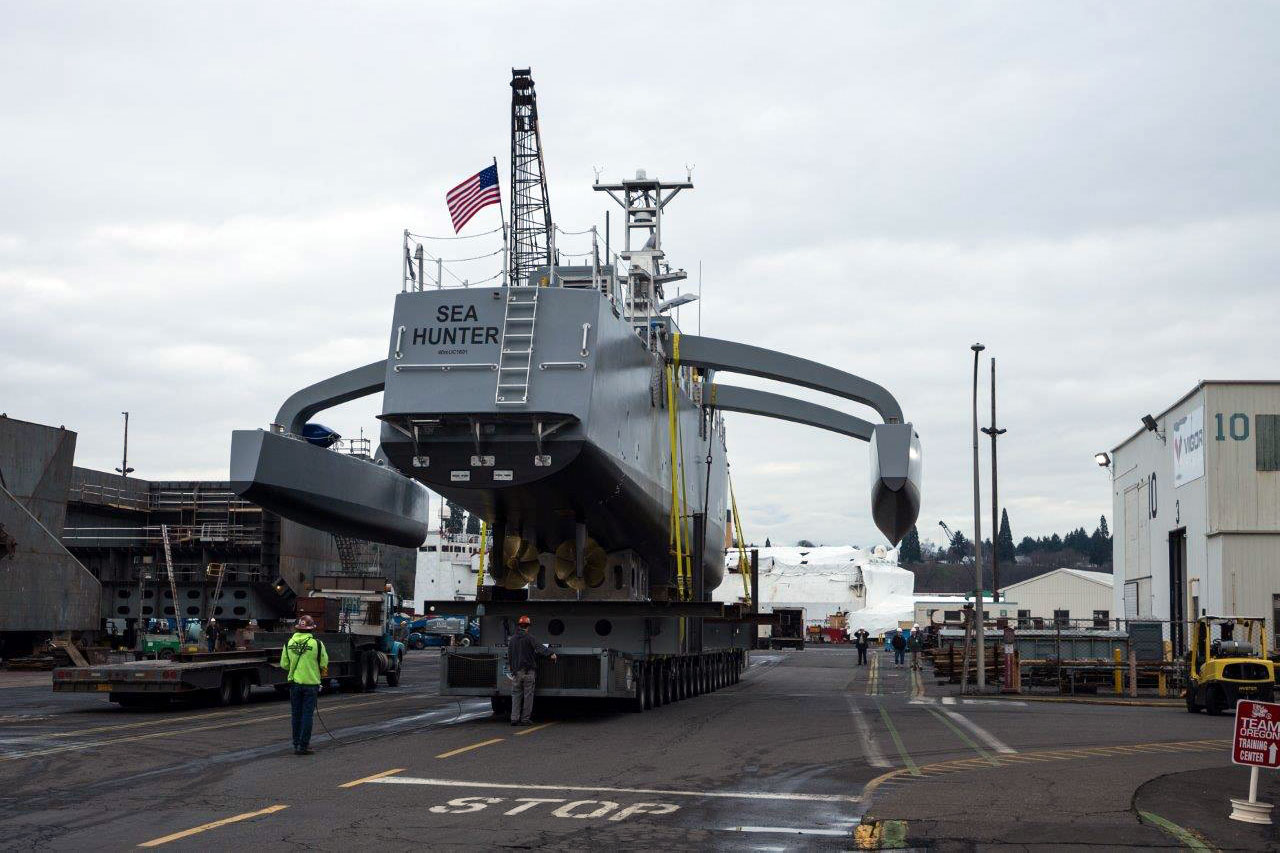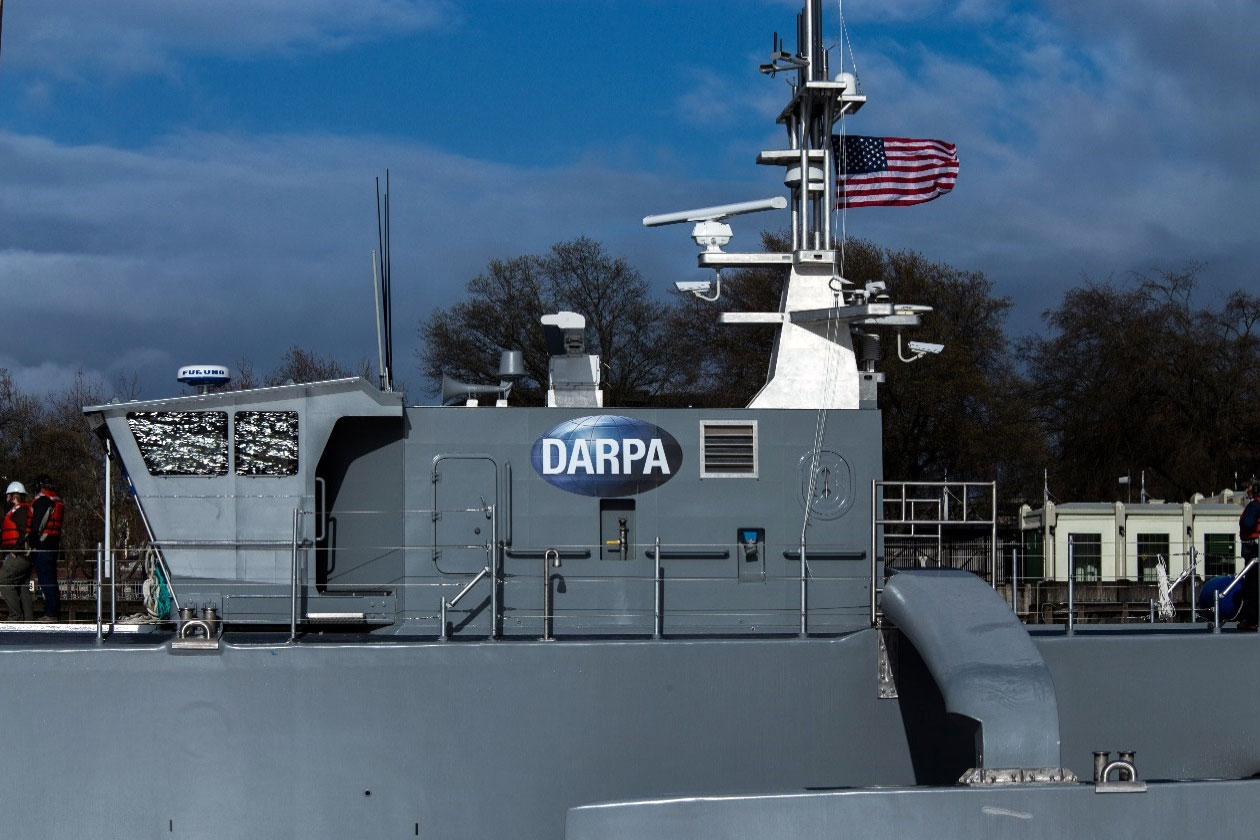The Pentagon’s top defense tech innovator has remained mum in recent months on the progress of its futuristic submarine-tracking ocean vessel the Sea Hunter — aka the U.S. Navy’s shiny new toy. It has provided only a brief fact sheet and sparse updates on the rig’s production.
Today, with construction complete and the ACTUV (pronounced “active”) scheduled to head to San Diego later this month for testing, DARPA has finally pulled back the veil on its revolutionary ship and Digital Trends was on deck to see what all the fuss was about.
To put it plainly, the Navy won’t be disappointed.
Until the unveil, the only available pictures of Sea Hunter consisted of a batch of artist renderings, so understanding its true scale was a bit hard to fathom. It wasn’t until we stepped foot on a small dock in Southeast Portland that we got a true sense of the rig’s scale. Measuring 132 feet from bow to stern and boasting a displacement of roughly 145 tons when fully loaded with fuel and an onboard payload, the ACTUV is quite large. Constructed of a fiberglass composite exterior and foam core, the ship was built to absorb high amounts of stress while remaining incredibly sturdy.
Absolutely no photos of the ship’s interior were allowed during our walkthrough.
Though DARPA willingly shared photos of Sea Hunter’s exterior, as expected, absolutely no photos of the ship’s interior were allowed during our walkthrough. Be it the inclusion of highly classified electronics or just a decision to keep some of its prized possession under wraps, we were only allowed to take mental snapshots of Sea Hunter’s insides. To our surprise, the ACTUV is actually a bit more roomy than one might imagine a crewless rig to be. Granted, staying aboard Sea Hunter for any extended amount of time would certainly be uncomfortable but at no time were we unable to stand straight up or (for the most part) move freely.
Comprised of three main areas, Sea Hunter is packed to the gills with sensors, fuel tanks, computers (more on that in a moment), and anti-fire mechanisms. With everything connected to each other to work in perfect harmony, it wasn’t hard to recognize the breadth of work required to pull off such an impressive rig. Though the exterior certainly paints a picture of an enormous ship, it isn’t until we stepped under the hood that we got a feel for how its electronic blood would flow. We’d be lying if we said it wasn’t a tad eery to think about the fact that while Sea Hunter operates, there wouldn’t be a soul inhabiting any part of the rig, despite what the furor of christening day may have let on.
Concerning the ship’s frame, Leidos — the company formally known as Science Applications International Corporation (SAIC) contracted by DARPA to build Sea Hunter — ripped its trimaran design directly from Polynesian history. Used frequently during wartime, a Polynesian trimaran canoe featured a long, narrow body supported by two outstretching pontoons dubbed amas. When in operation, the amas provide stability and lift for the ACTUV while its connected outriggers were designed to absorb stress. What this durability allows the Sea Hunter to do is remain fully functional in Sea State 5 (wave heights of roughly six feet and wind speeds of up to 21 knots) and it’s even considered operational through Sea State 7 (wave heights of up to 20 feet). Moreover, the long, narrow body allows the ship to swiftly cut through waves like a knife through butter, even while traveling at its top speed of 27 knots (31 miles per hour).
For a ship like Sea Hunter, durability is absolutely paramount. With onboard fuel tanks capable of carrying around 40 tons of diesel fuel, DARPA intends for the rig to traverse the open ocean for up to three months at a time completely on its own. Even more important than its durability, however, is the ACTUV’s built-in “brain.” Comprised of 31 blade servers, Sea Hunter’s onboard computer will be the only thing consistently responsible for driving and controlling the ship. Officially dubbed Sparse Supervisory Control, a human will only be required to operate the ACTUV’s system should something drastic happen. For all intents and purposes, Sea Hunter is 100 percent autonomous.
During our tour, the crew gladly divulged just how autonomous the ACTUV will be once deployed. As any of the on-hand staff would attest, Sea Hunter completely embodies a breakthrough in autonomous navigational capabilities that will likely alter the entire landscape of maritime operations. During prior at-sea testing, Sea Hunter’s autonomy suite displayed the capability not just tracking a surrogate vessel, but remained compliant with all maritime laws and showed a knack for following all rules of safe navigation. In essence, the ACTUV’s onboard system allows it to operate safely around manned vessels in all kinds of weather conditions, day or night.
The ACTUV’s main goal is to track and trail diesel-electric submarines — reportedly being sold by Russia and possibly used by Iran.
With further testing scheduled to commence in San Diego, a small operator house has been fitted to the top of Sea Hunter which allows a lone engineer to control everything from fuel levels in the ship’s tanks to the actual speed of the rig. As the engineer navigated from tab to tab — detailing exactly what each button or switch does — he pointed out that with the help of Sea Hunter’s internal computer, he’s capable of doing the job of upwards of 20 or 30 engineers. Once the ACTUV is delivered to the Navy, the pilot’s house will be removed and Sea Hunter takes over full responsibility of each of those hypothetical engineers’ jobs. As one would reasonably conclude, this facet of Sea Hunter allows the rig to operate at a dramatically lower cost than manned vessels which are currently deployed today.
So what exactly is Sea Hunter’s mission? Once deployed by the Navy, the ACTUV’s main goal is to track and trail uber quiet (and uber cheap) diesel-electric submarines — which are reportedly being sold by Russia and possibly used by Iran. According to Rear Admiral Frank Dennen (commander of the Naval Mine and Anti-Submarine Warfare Command), catching sight or sound of a battery-powered, diesel-electric submarine in coastal waters is “like trying to identify the sound of a single car engine in the din of a major city.” Basically, these things are incredibly quiet and Sea Hunter boasts the capability of picking up their faint whisper.
Preliminary tests conducted by DARPA showed the ACTUV to accurately detect and track a diesel-electric sub from nearly two miles away. While this doesn’t necessarily make finding such subs a walk in the park, it certainly would grant the Navy operational flexibility and the capacity to use vital crewmen in other areas of the branch. As Leidos puts it, “the ACTUV doesn’t just answer one of the biggest challenges the Navy faces today, it launches an entirely new class of unmanned vessel with vast possibilities for the future.”
Concerning Sea Hunter’s immediate future, two years of open-sea testing remain on the docket before DARPA officially hands the figurative keys to the Navy. After basking in the Portland sunlight for a few weeks, the company plans to load the ACTUV onto a barge and send the rig southward to San Diego. Once there, Sea Hunter will experiment with a range of sensors and payloads capable of being installed on the ship. DARPA intends to undertake initial trials while the Office of Naval Research will conduct the remainder of experimentation until September of 2018.
Considering the ACTUV took roughly six years to go from concept to physical vessel, DARPA’s April 7 christening of the rig was more about celebrating those who devoted time to getting Sea Hunter in the water. With speeches from Leidos chairman and CEO Roger Krone, Unmanned Warfare Systems director Rear Admiral Robert Girrier, and the aforementioned Littlefield, among others, the Sea Hunter was given a proper introduction to the public. DARPA director Arati Prabhakar even broke a bottle of ceremonial champagne (an alcohol-free, Navy-issued bottle, that is) which symbolically signaled a shift in U.S. maritime operations.
“Although ACTUV will sail unmanned, its story is entirely about people,” says DARPA’s ACTUV program manager, Scott Littlefield. “It will be the sailors who are deciding how, when, and where to use this new capability and the technology that has made it possible. And we could not have overcome the massive technical challenges to reaching this point without creative, committed teamwork of our commercial partners and the Office of Naval Research.”
Currently, there are no plans to begin construction of another ACTUV, though if the ship proves to be as successful as the preliminary tests suggest it will be, how could the Navy not want more? At a cost of roughly $23 million to create — i.e. considerably lower than what it costs to manufacture a manned warship — its inherent affordability is as hard to ignore as its positive trial runs. DARPA’s Sea Hunter may still be a few years away from making a solid impact in the Navy’s day-to-day operations, but it’s hard not to get excited about its potential.


